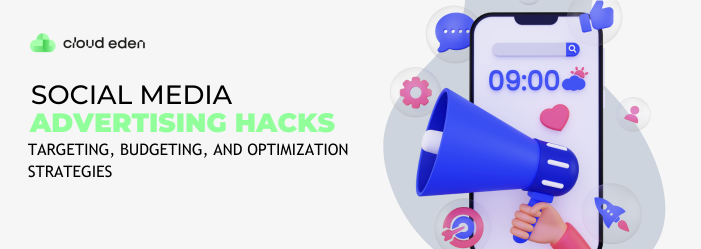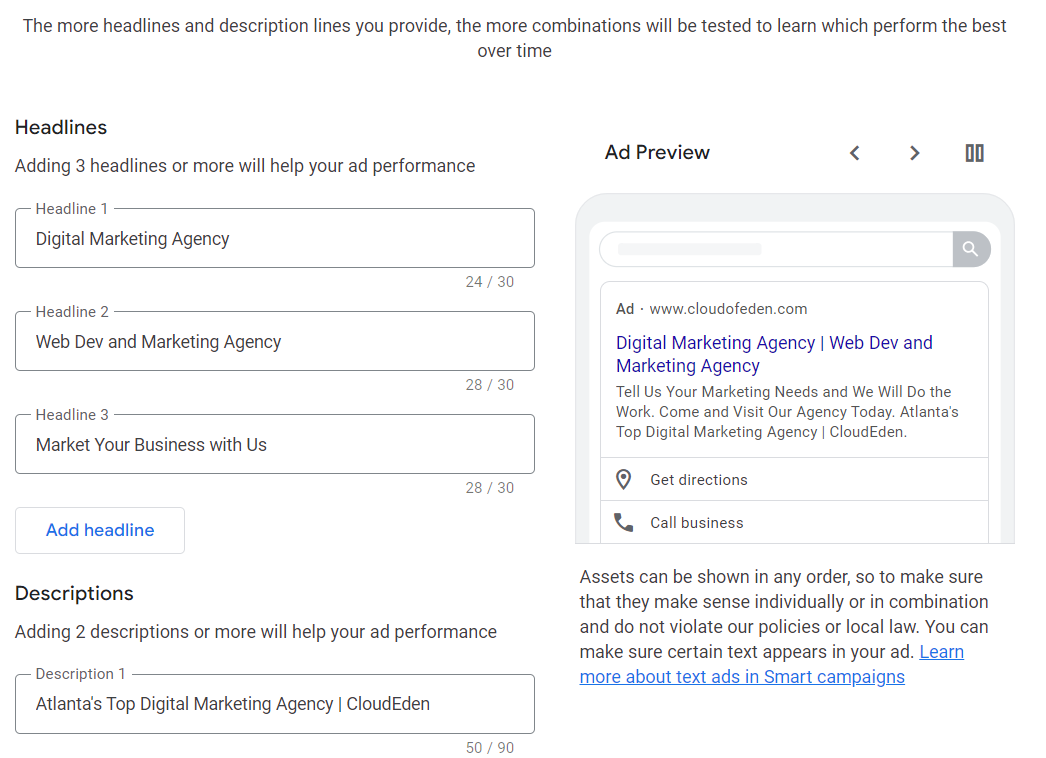Social Media Advertising Hacks: Targeting, Budgeting

- Introduction
- Overview
- Importance of Social Media Advertising
- 1.1 Audience Segmentation
- Hack: Segment Your Audience
- Explanation
- Implementation
- Estimated Budget
- Software and Tools
- 1.2 Interest and Behavioral Targeting
- Hack: Utilize Interest and Behavioral Targeting
- Explanation
- Implementation
- Estimated Budget
- Software and Tools
- 1.3 Geo-Targeting and Language Targeting
- Hack: Use Geo-Targeting and Language Targeting
- Explanation
- Implementation
- Estimated Budget
- Software and Tools
- 1.4 Retargeting
- Hack: Implement Retargeting Campaigns
- Explanation
- Implementation
- Estimated Budget
- Software and Tools
- 3.1 Allocate Budget Based on Goals
- Hack: Align Your Budget with Goals
- Explanation
- Implementation
- Estimated Budget
- Software and Tools
- 3.2 Test and Learn
- Hack: Start Small and Test
- Explanation
- Implementation
- Estimated Budget
- Software and Tools
- 3.3 Daily vs. Lifetime Budget
- Hack: Choose Budget Type
- Explanation
- Implementation
- Estimated Budget
- Software and Tools
- 3.4 Bid Strategy
- Hack: Experiment with Bid Strategies
- Explanation
- Implementation
- Estimated Budget
- Software and Tools
- 4.1 Ad Creative Optimization
- Hack: Continuously Optimize Ad Creatives
- Explanation
- Implementation
- Estimated Budget
- Software and Tools
- 4.2 Ad Placement Optimization
- Hack: Optimize Ad Placements
- Explanation
- Implementation
- Estimated Budget
- Software and Tools
- 4.3 Frequency Capping
- Hack: Implement Frequency Capping
- Explanation
- Implementation
- Estimated Budget
- Software and Tools
- 4.4 Campaign Analysis and Adjustment
- Hack: Analyze and Adjust Campaigns
- Explanation
- Implementation
- Estimated Budget
- Software and Tools
- Summary
- Key Takeaways
In the world of digital marketing, social media advertising stands as a formidable force. Businesses of all sizes have turned to platforms like Facebook, Instagram, Twitter, and LinkedIn to connect with audiences, build brand awareness, and drive sales. However, this competition is fierce, and to achieve success, marketers need to employ effective strategies for targeting, budgeting, and optimizing their campaigns. This comprehensive guide will delve deep into the core aspects of social media advertising, offering hacks and tips to enhance your campaigns' performance.
Targeting
1. Audience Segmentation
Hack: Break down your audience into smaller, more specific segments for targeted messaging.
Explanation:
Segmenting your audience is crucial for delivering personalized messages. Instead of lumping all potential customers into one broad category, segment them based on demographics, interests, behaviors, or psychographics. Platforms like Facebook offer tools like Custom Audiences and Lookalike Audiences that allow you to target specific groups.
Implementation:
- Custom Audiences: Upload a customer list, engage with people who have interacted with your business, or use website traffic to create targeted groups.
- Lookalike Audiences: Target users similar to your existing customers based on shared characteristics.
2. Interest and Behavioral Targeting
Hack: Use detailed interest and behavioral targeting to reach potential customers effectively.
Explanation:
Most social media platforms provide robust options for targeting based on interests and behaviors. For instance, Facebook and Instagram allow you to target based on hobbies, activities, purchasing behaviors, and more. This type of targeting enables you to zero in on users who are more likely to be interested in your products or services.
Implementation:
- Interest Targeting: Identify key interests related to your brand and input them into the targeting criteria.
- Behavioral Targeting: Leverage behaviors such as past purchasing activity, device usage, or travel history to refine your audience.
3. Geo-Targeting and Language Targeting
Hack: Utilize geo-targeting and language targeting for localized campaigns.
Explanation:
If your business caters to specific locations or language-speaking audiences, geo-targeting and language targeting are vital. Geo-targeting allows you to target users based on their location, while language targeting ensures that your ads resonate with users in their preferred language.
Implementation:
- Geo-Targeting: Specify cities, regions, or countries where your ads should appear.
- Language Targeting: Choose languages based on your audience's preferences.
4. Retargeting
Hack: Implement retargeting campaigns to re-engage users who have interacted with your brand.
Explanation:
Retargeting, also known as remarketing, involves showing ads to users who have previously interacted with your website or app. This is a powerful way to nudge potential customers towards conversion, especially if they've abandoned a shopping cart or shown interest in specific products.
Implementation:
- Pixel Installation: Install a tracking pixel on your website to monitor user behavior.
- Dynamic Ads: Use dynamic ads to showcase products users have viewed or left in their cart.

Budgeting
1. Allocate Budget Based on Goals
Hack: Align your budget allocation with your advertising goals.
Explanation:
Different campaign objectives require different budgeting strategies. For example, brand awareness campaigns might require a broader budget allocation, while direct response campaigns can focus on a more targeted spend.
Implementation:
- Goal Setting: Determine your campaign objectives (e.g., brand awareness, lead generation, sales).
- Budget Allocation: Allocate a higher budget to campaigns that directly impact your business objectives.
2. Test and Learn
Hack: Start with a small budget and test multiple campaigns to identify what works best.
Explanation:
Testing different ad creatives, audiences, and bidding strategies with a smaller budget helps you identify the most effective combinations before scaling up. This approach minimizes risk and maximizes ROI.
Implementation:
- A/B Testing: Run split tests on various elements of your campaigns.
- Optimize and Scale: Increase the budget for high-performing ads while cutting underperforming ones.
3. Daily vs. Lifetime Budget
Hack: Choose between daily and lifetime budgets based on campaign duration and consistency.
Explanation:
Daily budgets allow you to spend a set amount each day, providing consistent exposure, while lifetime budgets offer flexibility over the entire campaign duration. The choice depends on your campaign goals and duration.
Implementation:
- Daily Budget: Use for ongoing campaigns that require consistent daily exposure.
- Lifetime Budget: Use for time-bound campaigns or when you want to control spending over the entire campaign duration.
4. Bid Strategy
Hack: Experiment with different bid strategies to optimize cost-effectiveness.
Explanation:
Different bid strategies, such as cost per click (CPC), cost per mille (CPM), and cost per acquisition (CPA), offer various advantages. Choose a bid strategy that aligns with your campaign objectives and budget.
Implementation:
- CPC Bidding: Ideal for driving website traffic.
- CPM Bidding: Suitable for brand awareness campaigns.
- CPA Bidding: Best for driving conversions or sales.

Optimization Strategies
1. Ad Creative Optimization
Hack: Continuously test and optimize ad creatives for maximum engagement.
Explanation:
Ad creatives, including images, videos, and ad copy, significantly impact campaign performance. Regularly testing and optimizing these elements helps you identify what resonates most with your audience.
Implementation:
- Image Testing: Test different images to see which ones capture attention.
- Video Testing: Experiment with video lengths and formats to find the most engaging.
- Copy Testing: Test various headlines and descriptions for clarity and impact.
2. Ad Placement Optimization
Hack: Use ad placement optimization to identify the most effective placements.
Explanation:
Different ad placements, such as feed ads, stories, and in-stream videos, perform differently based on the audience and campaign objective. Optimize placements to focus on those delivering the best results.
Implementation:
- Automatic Placement: Start with automatic placements to gather data.
- Manual Placement: After gathering data, manually adjust placements to focus on high-performing areas.
3. Frequency Capping
Hack: Implement frequency capping to prevent ad fatigue.
Explanation:
Frequency capping limits the number of times an ad is shown to the same user, preventing ad fatigue and annoyance. This strategy ensures your ads remain effective without overwhelming your audience.
Implementation:
- Set Cap: Set a cap on how many times an ad is shown to a user within a specific timeframe.
- Monitor: Regularly monitor ad frequency and adjust caps as needed.
4. Campaign Analysis and Adjustment
Hack: Regularly analyze and adjust your campaigns based on performance data.
Explanation:
Continuous monitoring and adjustment are crucial for optimizing social media campaigns. Analyzing key metrics like click-through rates, conversion rates, and return on ad spend helps identify areas for improvement.
Implementation:
- Analytics Tools: Use platform analytics and third-party tools to monitor performance.
- Adjust: Make adjustments to targeting, creatives, and budgets based on analysis.

Conclusion
Social media advertising offers immense opportunities for businesses to connect with their audiences and achieve their marketing goals. By mastering targeting, budgeting, and optimization strategies, you can create effective and efficient campaigns that deliver tangible results.
The hacks and tips outlined in this guide provide a comprehensive roadmap for navigating the complex world of social media advertising, empowering you to implement these strategies and achieve success in your advertising efforts.
Remember, if you dont have the time and skills to try these out, feel free to
book a call with us and we will be glad to help.
Welcome To Our Blog





